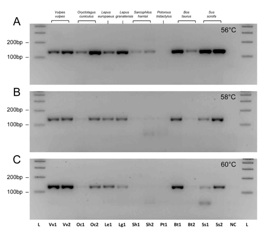How we went about the review

Our focus
We undertook 5 separate studies that focused upon:
-
• The potential to generate false positives using a molecular technique developed by the University of Canberra (Invasive Animals Cooperative Research Centre);
-
• A study of the detection patterns and dispersion of ‘fox positive’ scats obtained in Tasmania using molecular survey techniques that sought to test if these data had arisen from a fox population;
-
• Analysis of the reliability of anecdotal fox sightings as a means to assess baiting efficacy and fox distribution and abundance;
-
• A review of the data and analysis used to support the efficacy of buried 1080 baiting as a strategy capable of eradicating foxes in Tasmania;
-
• A comprehensive analysis of the opportunistically acquired physical exhibits used to support the existence of a fox population in Tasmania.
Peer review
Once in draft form, these studies were circulated to 12 other PhD qualified researchers in Australia, United Kingdom, European Union and the United States for critical review. We ensured that we received feedback from people from a diverse range of backgrounds including Tasmanian scientists who have previously been openly supportive of the FEP approach. After revision of our research, we submitted our findings for further peer review and publication in a range of scientific journals concerned with forensic science, applied ecology and wildlife research.
But don’t FEP scientific reviews have to be ‘approved’ by the Tasmanian government?
It is far better if scientific reviews are totally independent. Even individual scientists may have a preference for a particular outcome over another. That is why it is important to ensure that the scientific community as a whole can eliminate bias by having an opportunity to offer alternative explanations and attempt to replicate results and test claims. This can only be achieved through transparency and a willingness to share data and submit to a thorough peer review process of the experimental data, results and conclusions. It is misleading for individuals or institutions to claim that their views represent scientific consensus without providing a broad range of independent scientists the opportunity to challenge the quality and interpretation of key data.

Our collaboration
In 2012, 10 scientists and technical specialists collaborated to review the available data generated by the fox eradication program in order to test and replicate key methods. An important partner in this collaboration was the independent Interdisciplinary Centre of Marine and Environmental Research of the University of Porto (Portugal), that specialises in molecular ecology and forensic use of DNA technology.
